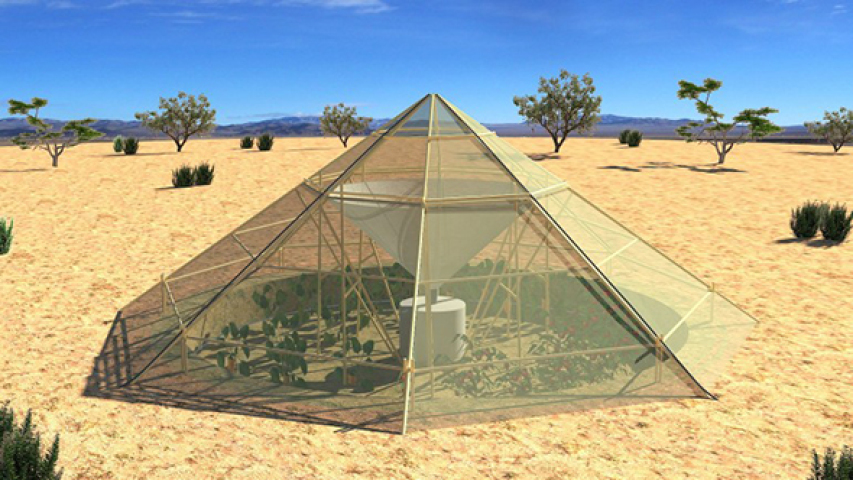Greenhouse in the desert

In some regions of Ethiopia, erratic rainfalls mean that not a drop of rain might fall over a period of six months: growing fruit and vegetables is an everyday struggle.
In partnership with the University of Gondar, the Franco-Ethiopian organisation Root-up designed a multifunctional greenhouse that collects dew which evaporates from plants: it collects around 200 litres of water per day which is then used to irrigate the crops in the greenhouse or which can also be used as drinking water if necessary.
The greenhouse is installed in a pit, dug in the ground and is constructed from locally-sourced bamboo, a polycarbonate sheet, a bioplastic sheet, rope and a water tank. It requires no special skills to be built and it can be erected in around five days with just basic tools.
The polycarbonate sheet forms the greenhouse's pyramidal walls, much like a tent, and it can be opened at the top. The bioplastic sheet acts as a funnel at the centre of the greenhouse and leads the water into a tank.
The greenhouse works by trapping hot and humid air during the day. When the outdoor temperature falls overnight, the upper part of the greenhouse is opened up and cools the ambient air: the water vapour condenses and forms minuscule droplets that trickle down the walls into a water tank.
According to Root Up, the quantity of water that can be collected depends on the amount of humidity in the atmosphere. On the high plateaus of Gondar, humidity is around 50 % during the dry season and it is estimated that around 200 litres of water can be collected every day.
Root Up has raised funds for its low-tech project through a crowdfunding campaign on Indiegogo. The NGO hopes to manufacture the first prototype greenhouse in June. After that, it is the farmers of the Gondar region who will take over, with the aim of manufacturing 10 more dew collectors by November and, most importantly, the possibility of creating an autonomous farming community.
More information
www.roots-up.org/





